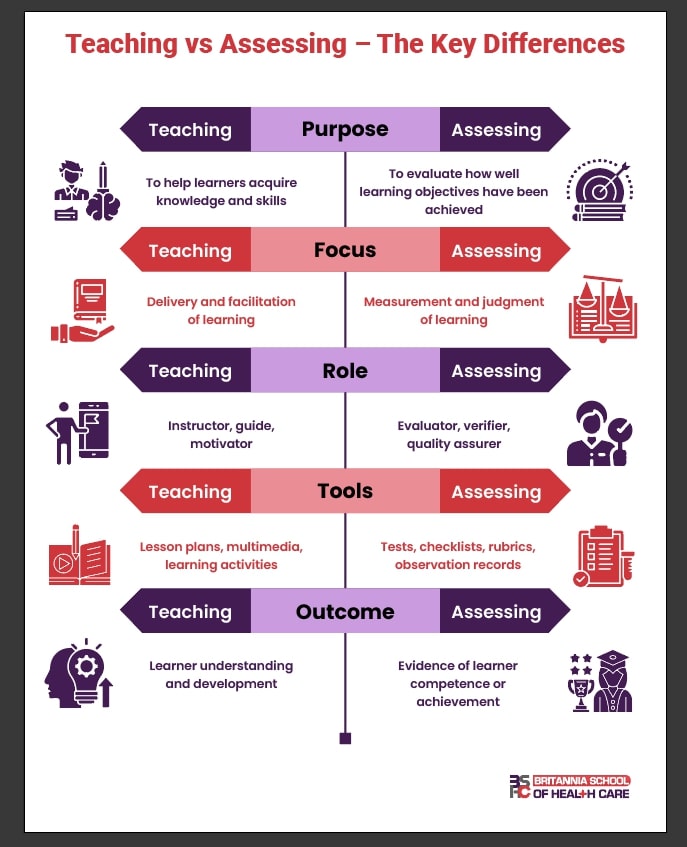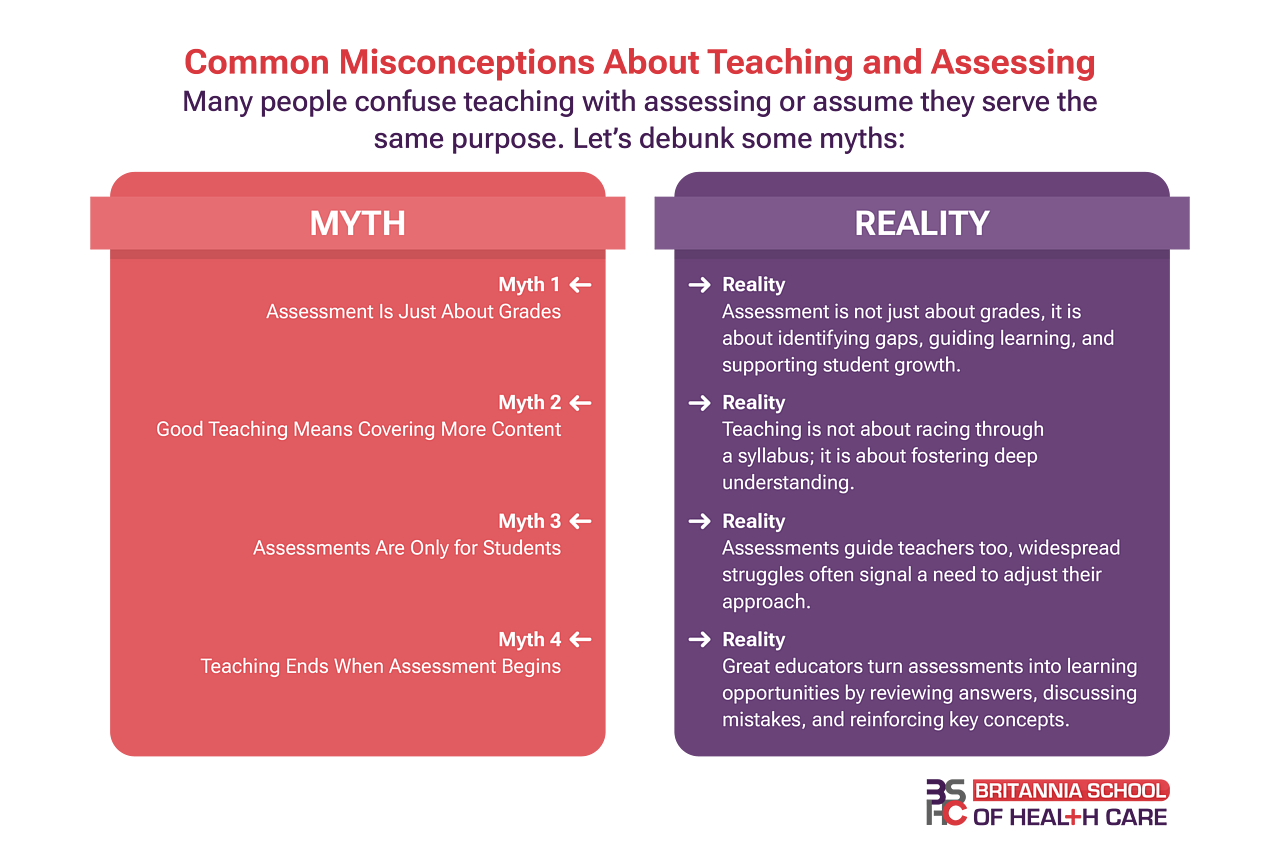In the world of education and training, teaching and assessing are two foundational yet distinctly different processes. While they often go hand-in-hand, especially in formal education or vocational training, understanding their unique roles is essential for educators, trainers, and learners alike. If teaching is lighting the path of learning, then assessment is checking how far the light reaches. While these two educational pillars are deeply connected, they serve distinct purposes, one fuels the journey, the other maps the progress.
Why Understanding the Difference Between Teaching and Assessing Matters More Than Ever?
Yet in classrooms worldwide, the line between teaching and assessing often blurs, leading to confusion about their true roles. Are we prioritising content delivery over meaningful understanding? Are tests measuring learning or just memorisation? Recognising the difference between these roles not only improves instructional design and learner engagement but also ensures that learning outcomes are effectively met and continuously improved.
This blog will unravel the real difference between teaching and assessing, explore why both matters, and discover how balancing them creates transformative education experiences that go beyond grades to genuine growth.

Teaching focuses on facilitating learning, inspiring curiosity, and guiding learners toward knowledge and skill development.

Assessing, on the other hand, measures the extent to which that learning has been achieved, providing evidence of progress, achievement, and areas for improvement.
What is Teaching?
Teaching is the process of delivering knowledge, skills, values, and attitudes to learners. It involves planning, instruction, engagement, and support to help learners understand and apply what they have learned. Teaching is all about guiding, explaining, and inspiring. Whether it is in a classroom, online, or in a workplace setting, teaching involves:
- Planning lessons that meet learning outcomes
- Delivering content in a way that engages different learning styles
- Providing support, encouragement, and motivation
- Monitoring progress and adjusting teaching methods accordingly.
"Teaching is leaving a vestige of oneself in the development of another."
—John Dewey —John Dewey
What is Assessing?
Assessing is the process of measuring a learner’s knowledge, skills, understanding, or performance against defined learning outcomes or criteria. It helps determine whether learning has occurred and to what extent. Assessing is about measuring, judging, and validating learning. This might include:
- Observing learners in practice
- Reviewing evidence like portfolios or assignments
- Giving feedback on strengths and areas for improvement
- Ensuring standards are met fairly and consistently
“Assessing is not about catching students failing, it is about catching them learning."
—Carol Ann Tomlinson —Carol Ann Tomlinson

Can You Do Both Teaching and Assessing?
Absolutely yes, many education professionals do! In fact, teaching and assessing often complement each other. If you are a teacher, having assessor skills means you can effectively judge whether your students are really meeting their learning goals. And if you are an assessor, understanding teaching methods can help you support learners who are struggling to demonstrate their abilities.
Why Both Teaching and Assessing are Essential?
Teaching and assessing are interdependent. Effective teaching should lead to meaningful assessment outcomes, and insightful assessment results can improve future teaching strategies.
- Teaching without assessment may lack direction and clarity on learner progress.
- Assessing without teaching may become a superficial judgment without real developmental value.
Together, they ensure a robust, learner-centred approach that not only imparts knowledge but also verifies learning and competence.
How Teaching and Assessing Work Together?
While they serve different functions, teaching and assessing work in tandem:
- Assessment informs teaching:Results help teachers adjust their methods to meet students’ needs.
- Teaching prepares for assessment:Effective instruction ensures students are ready for evaluations.
- Feedback loop:Assessments provide insights that refine teaching strategies.
Striking the Right Balance
Great educators know that neither teaching nor assessing should dominate. Instead, they should complement each other:
✅Teach for understanding, not just testing.
✅Use assessments as learning tools, not just judgments.
✅Encourage self-assessmentso students take ownership of their progress.

Final Thought
Teachers and assessors play different roles; both are essential to the learning process. Teachers build the foundation, and assessors confirm the outcome. Together, they ensure learners not only gain knowledge but can prove they have mastered it. So, whether you are drawn to the creativity of teaching or the precision of assessing (or both!), there is a rewarding place for you in education.
Ready to Get Started?
If you are inspired to teach, assess, or do both, these courses can open doors to roles in colleges, training providers, apprenticeships, care settings, and more. explore qualifications like:
- Level 3 Award in Education and Training (AET) – a great entry point for new teachers
- Level 3 Certificate in Assessing Vocational Achievement (CAVA) – for those who want to assess learner performance
- Level 5 Diploma in Teaching (DiT) – for teaching in further education or adult learning settings

